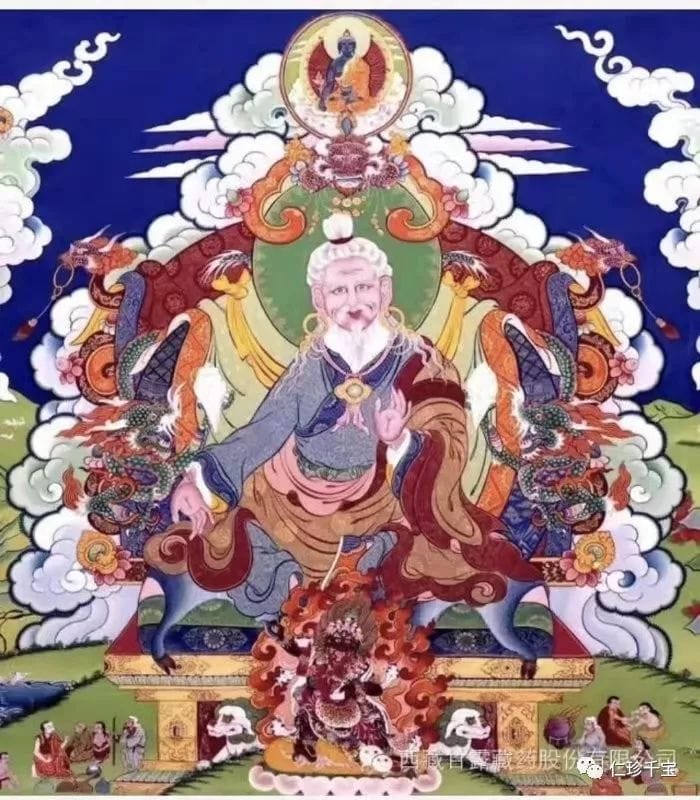
An Introduction of the Four Medical Tantras
According to the historical records of Bon religion and the research by experts, the Four Medical Classics is the earliest extant medical treatise of the Tibetan people. The work was authored by the son of the founder of the Bon religion – Chedbu Trishe and it was published only in AD 1999. The founder of Bon was Shenrab Miwo.
In the 8th century, Yuthok Yonten Gonpo, a renowned Tibetan medical scholar who was known as an incarnation of Medicine Buddha, together with others, researched, enriched, supplemented, and edited the text, giving birth to the Tibetan medical classic known as the Four Medical Tantras.
The Four Medical Tantras is an authoritative academic compendium of Tibetan medicine that integrates the essence of Tibetan medical theory and clinical practice. Revered as the “Encyclopaedia of Tibetan Medicine,” it represents the most systematic, comprehensive, and foundational theoretical framework in the field of Tibetan medicine.
Besides the widely-held belief that the Four Medical Tantras were composed by Yuthok Yonten Gonpo, there were several other theories regarding its origin:
- The Buddhist perspective holds that the Four Medical Tanrtas are Buddhist scriptures, as told by Sakyamuni Buddha. According to this view, not only the bodhisattvas of Buddhism but also the sages from non-Buddhist traditions jointly requested the Medicine Buddha to expound the Four Medical Tantras.
- Another view has it that it is a classical medical treatise that integrates the medical knowledge of various regions including Mongolia, India, Turkey, and the Hans. It presents these teachings in the form of commentaries, that were eventually compiled into a coherent treatise. Therefore, according to this view, the text is not even a discourse delivered by the Buddha.
- A third theory attributes the text to the great treasure revealer (terton) Drapa Ngonshe who is said to have extracted the Four Medical Tantras as a terma (hidden treasure teaching).

The Four Medical Tantras (also known as the Four Treatises of Medical Prescriptions) are divided into four parts, namely:
- The Root Tantra (Tsagyu) : This section provides a general and systematic overview of human physiology, pathology, diagnosis, and treatment.
- The Explanatory Tantra (Shegyu): This section gives a detailed explanation of the human physiology and anatomy, pathology, causes of diseases, disease progression, hygiene and preventive care, properties of medicinal substances, diagnostic techniques, and principles of treatment.
- The Instructional Tantra (Mennakgyu): This section focuses on the diagnosis and treatment of various diseases.
- The Subsequent Tantra (Chimagyu): This section discusses pulse diagnosis, urine diagnosis, formulation and combination of prescriptions, preparation and processing of medicinal substances, their functions, methods of administration, and external therapies such as bloodletting, moxibustion, fire cauterisation, topical applications, and cupping.
The basic theory of the Four Medical Tantras is similar to that of Traditional Chinese Medicine (TCM). Commonalities include pulse diagnosis and the Eight Extraordinary Meridians (qi jing ba mai), which are almost the same in both systems. The differences between the Four Medical Tantras and TCM are in the composition of medicines. The ingredients used for Tibetan medicines are minerals and flowers, with very little animal substances. But for Chinese medicine, the ingredients widely used are roots and fruits, and they also use animal substances.

Medical principles are specifically mentioned in Buddhist scriptures. Notably representative are the Vinaya, Golden Light Sutra, Kalachakra Tantra, Continuous Cycle of Sound, Secret Tantra: Nectar of Merit Continuation, and others. The coverage for medicines is more complete which includes diagnosis, treatment and medicines.
As for health preservation, all secret tantras are for the purpose of health preservation. In fact, every classic includes ways to maintain health. They are only short of diagnosis and treatment methods.
The methods used in Tibetan medicine are similar to that of TCM. They include observing the patient, palpation, asking the patient questions, and pulse-taking.
According to statistical data, there are currently over 3,000 types of Tibetan medicines in China, and there are about 500 Tibetan medical prescriptions. However, out of the 500, only 60 are commonly used. Of the 60, about 20 are more accessible.
Tibetan medicine also incorporates components from Ayurveda. Within Ayurveda, there are two or three commonly used medicines, and the great translator Vairotsana had already translated them into Tibetan, sometime in the 8th century. In today’s context, the more popular Tibetan medicines are Myrobalan, the three sacred fruits, and the five great essences. These are all frequently used for health preservation.